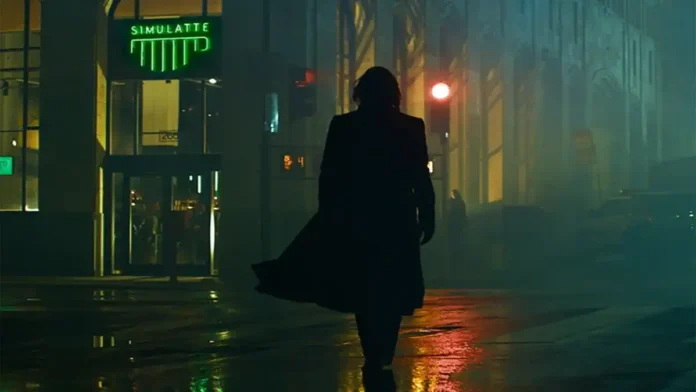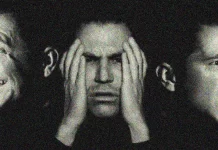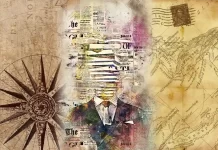
You’ve probably had deja vu if you’ve ever had the experience that a scenario, people, or place feels very familiar even though you know it shouldn’t, such as when visiting a new city for the first time. Déjà vu, which means “previously seen,” mixes objective unfamiliarity – the knowledge that something shouldn’t be familiar based on adequate evidence with subjective familiarity. Learn more about deja vu.
Contents
What is Deja Vu?
The phrase deja vu or “déjà vu” is French and means “previously seen” Using this term means explaining a situation when you feel like you have been to this place or have seen a person, while you have never been to that place before, and have never seen that person back, Those who have felt it describe it as an overwhelming sensation of familiarity with something that shouldn’t be familiar in the first place.
For example, you’re visiting any temple for the first time and touching a bell when it suddenly occurs that you’ve been there before. Or perhaps you’re out to dinner with friends, having a conversation about a current political issue, and you have a distinct impression that you’ve made this conversation before, same place, same dinner, same topic.
Origin of the word “déjà vu”
The term sensation de déjà-vu (feeling of déjà vu) was coined in 1876 by French philosopher Émile Boirac (1851-1917), who used it in his work L’Avenir des sciences psychiques. It is now widely used worldwide.
Why does Deja Vu Occur?
There are a variety of hypotheses of why déjà vu occurs, and some are complicated. According to Swiss academic Arthur Funkhouser, there are various déjà experiences, so to understand the phenomena better, we should study the distinctions between them.
Déjà vu has long been linked to temporal-lobe epilepsy and reported to occur soon before a temporal-lobe seizure. During the actual seizure activity or in the times between convulsions, people who are having this type of seizure may experience déjà vu.
Because deja vu can happen to people who may or may not have any medical problems, there is much speculation about how and why it happens. For example, many psychoanalysts believe deja vu can happen through imagination or wish fulfillment. In contrast, some psychotherapists think it can happen due to a brain mismatch that makes the present an experience. Finally, many parapsychologists believe it has something to do with past existence.
It’s not uncommon to have a sense of déjà vu. According to a study released in 2004, more than 50 polls on déjà vu found that almost two-thirds of people have experienced it at least once in their lives, with many claiming many instances. As people become more aware of déjà vu, this reported figure appears to be increasing. Déjà vu is frequently characterized by what you see, although it is not limited to vision, and even those who are blind can have it.
Study and Research on Deja Vu
Déjà vu is challenging to research in the laboratory since it is a transitory event with no apparent trigger. Nonetheless, depending on their theories, academics have utilized various approaches to investigate the phenomenon. Researchers may conduct surveys, investigate possible linked processes, particularly those involving memory, or devise multiple experiments to investigate déjà vu. Because déjà vu is difficult to quantify, experts have proposed different theories to explain how it works. Below are a few of the most popular hypotheses.
Memory-based hypotheses
The notion behind the memory theories of déjà vu is that you have already experienced a circumstance or something quite similar, but you don’t recall it. Instead, you remember it subconsciously, which is why it feels familiar, even though you have no idea why.
Single element familiarity: The single element familiarity hypothesis states that if one element of a scene is familiar to you, but you don’t recognize it because it’s in a different setting, such as seeing your barber out on the street, you’ll have déjà vu. Even if you don’t remember your barber, your brain recognizes them and generalizes that sensation of familiarity to the entire environment. Other researchers have also extended this hypothesis to include multiple elements.
Gestalt familiarity: The gestalt familiarity theory examines how objects can be arranged in a scene to make déjà vu happen when you see something similar. For example, You may not have seen your friend’s picture in their living room before, but you may have seen a room set out similarly to your friend’s — a painting hung above the sofa, across from a bookcase. You get déjà vu because you can’t remember the other room.
The gestalt similarity hypothesis has the advantage of being more easily tested. For example, participants in one study were asked how familiar a new space seemed and if they felt like they were experiencing déjà vu after viewing it in virtual reality. The researchers discovered that study participants who couldn’t remember the old rooms were likelier to believe a new space was familiar and that they were experiencing déjà vu if the new room resembled the old one. Furthermore, the higher these scores were, the more similar the new space was to the previous room.
Neurological hypotheses
Spontaneous brain activity: According to some theories, déjà vu occurs when your brain engages in spontaneous activity unrelated to what you’re doing. You may get a false sense of familiarity if this happens in the portion of your brain that deals with memory. Individuals with temporal lobe epilepsy, in which aberrant electrical activity occurs in the area of the brain that deals with memory, provide some evidence. Patients may feel déjà vu if their brains are electronically stimulated in the pre-surgery examination. According to one study, déjà vu occurs when the parahippocampal system, which aids in recognizing familiar objects, malfunctions and causes you to believe something is normal when it isn’t. Others have claimed that déjà vu isn’t limited to a particular familiarity system but encompasses various memory systems and their relationships.
Neural transmission speed: Other theories are based on the rate at which information passes through your brain. Different parts of your brain send information to “higher-order” sections of your brain, which combine data to help you make sense of the environment. If this intricate process is disturbed in any way – for example, if one portion delivers something slower or faster than usual – your brain will misinterpret your surroundings.
Dream-based hypotheses
Dreams can also explain the sensation of déjà vu, and they have three elements in common. First, according to Brown’s survey, some déjà vu experiences mirror the circumstance in dreams rather than waking life. Twenty percent of respondents said they had déjà vu episodes in their goals, while 40% said they had déjà vu in both reality and dreams. Second, people may experience déjà vu due to seeing pieces from their previously remembered dreams. Zuger investigated the relationship between recalled dreams and déjà vu experiences and found a significant link. Finally, people may have déjà vu when dreaming, which has been linked to dream frequency.
Simulation Hypotheses
According to the simulation hypotheses, if we live in a simulated world that is the Matrix, then Deja Vu is A Glitch in the Matrix. However, Deja vu is well-known in science fiction novels and films. For example, in The Matrix trilogy, Carrie-Anne Moss’s character Trinity tells viewers (and Keanu Reeves’s character Neo) that déjà vu is a “glitch in the Matrix.” This synthetic reality keeps humans unconscious and leads to the belief that intelligent computers have taken over the world.
To Know more about simulation hypotheses, Read these articles:
Is the universe a computer simulation? – Simulation Theory explained
Existence: Is Your Reality a Complex Computer Simulation?
Brain in a Vat: Brain Connected with a Computer and the Computer Simulating the Fake Reality
Conclusion
Though the initial hypotheses appear to have one common thread: a transient malfunction in cognitive processing, an explanation for déjà vu remains difficult. For the time being, scientists can continue to devise studies that explore the nature of déjà vu more directly to be more confident of the correct explanation.
Sources
- C. Moulin. The cognitive neuropsychology of déjà vu. Part of the Essays in Cognitive Psychology series. Psychology Press. New York, NY 2018. https://www.routledge.com/The-Cognitive-Neuropsychology-of-Deja-Vu/Moulin/p/book/9781138696266
- Brown, A. S. (2004). The Déjà Vu Illusion. Current Directions in Psychological Science, 13(6), 256–259. https://doi.org/10.1111/j.0963-7214.2004.00320.x
- Doležal, M. (2022, January 19). Déjà vu. Worldwide Scientific Discussion Community. Retrieved March 11, 2022, from https://wsdcspace.wordpress.com/2022/01/19/deja-vu/
- Tip-of-the-tongue states and related phenomena. Ed. Bennett L. Schwartz and Alan S. Brown. Cambridge University Press. New York, NY 2014. http://www.cambridge.org/gb/academic/subjects/psychology/biological-psychology/tip-tongue-states-and-related-phenomena?format=HB
- Bartolomei, F., Barbeau, E., Gavaret, M., Guye, M., McGonigal, A., Régis, J., and P. Chauvel. “Cortical stimulation study of the role of rhinal cortex in déjà vu and reminiscence of memories.” Neurology, vol. 63, no. 5, Sept. 2004, pp. 858-864,doi:10.1212/01.wnl.0000137037.56916.3f.
- J. Spatt. “Déjà vu: possible parahippocampal mechanisms.” The Journal of Neuropsychiatry & Clinical Neurosciences, vol. 14, no. 1, 2002, pp. 6-10, DOI:10.1176/jnp.14.1.6.
- Cleary, A. M., Brown, A. S., Sawyer, B.D., Nomi, J.S., Ajoku, A.C., and A. J. Ryals. “Familiarity from the configuration of objects in 3-dimensional space and its relation to déjà vu: a virtual reality investigation.” Consciousness and Cognition, vol. 21, no. 2, 2012, pp. 969-975, DOI:10.1016/j.concog.2011.12.010.
FACT CHECK: We strive for accuracy and fairness. But if you see something that doesn’t look right, don’t hesitate to Contact us.
DISCLOSURE: This Article may contain affiliate links and Sponsored ads, to know more please read our Privacy Policy.
Stay Updated: Follow our WhatsApp Channel and Telegram Channel.











